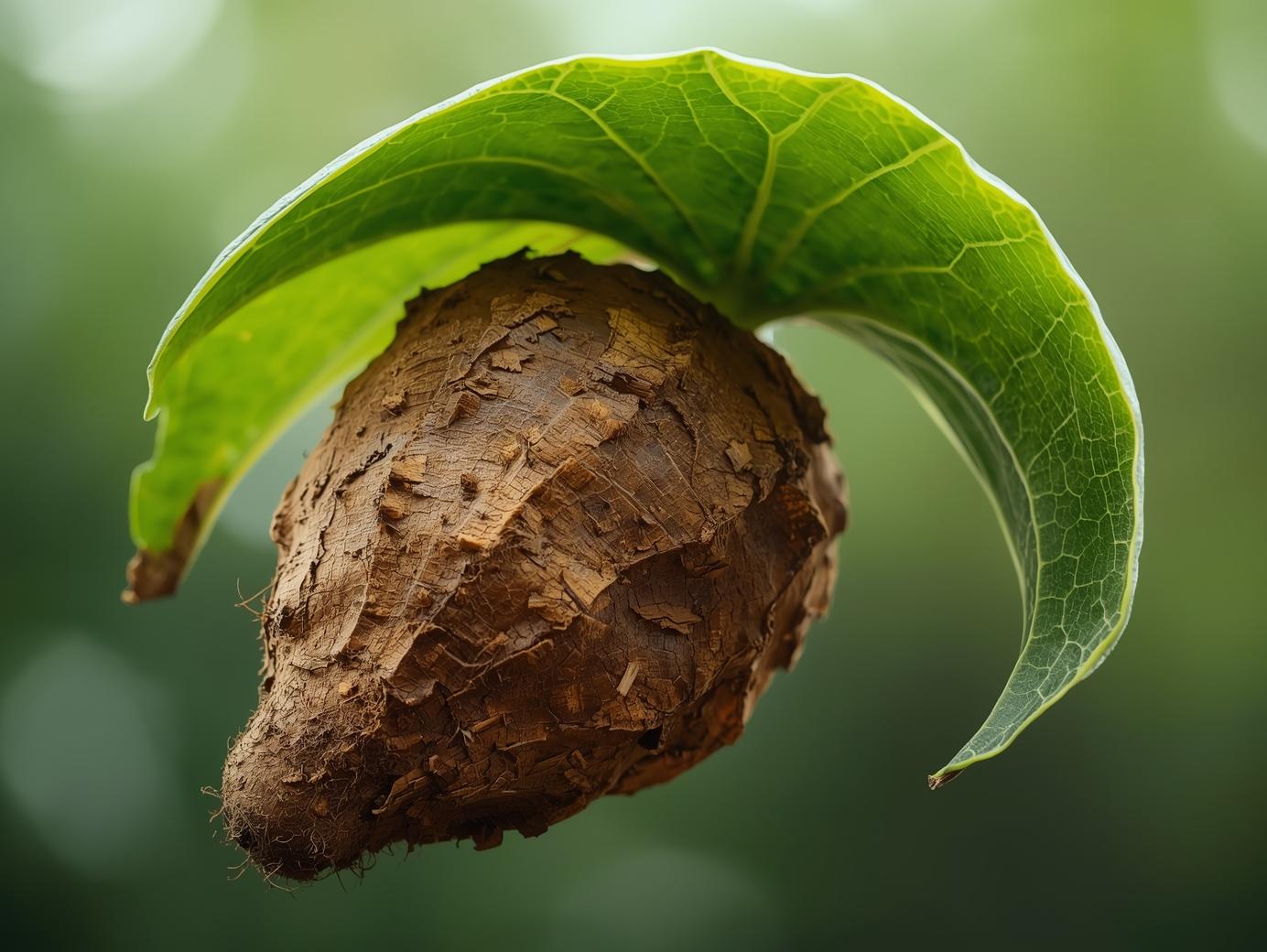Site Preparation
Proper site preparation is the first step to successfully growing Colocasia, also known as taro root, in your home courtyard. Since this tropical plant loves warmth and humidity, choose a spot that receives partial to full sunlight throughout the day. Colocasia thrives in moist soil, so select an area that can retain consistent moisture without becoming waterlogged. For courtyard gardens, raised beds, large planters, or corner plots with good drainage work best.
Start by clearing weeds, stones, and any plant debris from the site. Loosen the soil to a depth of 12 inches to encourage healthy root development. Mixing in organic compost or well-rotted manure improves soil fertility and moisture retention. If you live in a cooler U.S. region, consider starting the plants indoors or using containers that can be moved to warmer spots. Well-prepared soil and proper site conditions ensure your Colocasia roots grow strong and flavorful.
Soil Selection
Colocasia root grows best in rich, loamy, and consistently moist soil. The ideal pH for taro cultivation ranges from 5.5 to 7.0. It’s important to have soil that holds moisture without causing water stagnation, as overly wet soil can lead to rot. Mixing organic matter such as compost, peat, or coconut coir helps create a balanced soil texture that retains water while maintaining proper aeration.
For courtyard gardening in the USA, choose deep containers or raised beds filled with nutrient-rich soil blends. Heavy clay soils should be amended with sand and compost to improve drainage, while sandy soils benefit from organic materials to boost water retention. Conducting a soil test before planting helps determine nutrient needs, ensuring that the soil is ready to support vigorous Colocasia root growth. The right soil structure promotes large, tender roots and lush, green foliage.
Planting
Planting Colocasia root requires careful timing and preparation. In most U.S. climates, planting should begin in late spring once the danger of frost has passed and the soil temperature is consistently above 65°F. You can use small corms (root tubers) or young plants for propagation. Plant the corms about four inches deep with the bud side facing upward, spacing them at least 18 to 24 inches apart to allow room for the large leaves and root expansion.
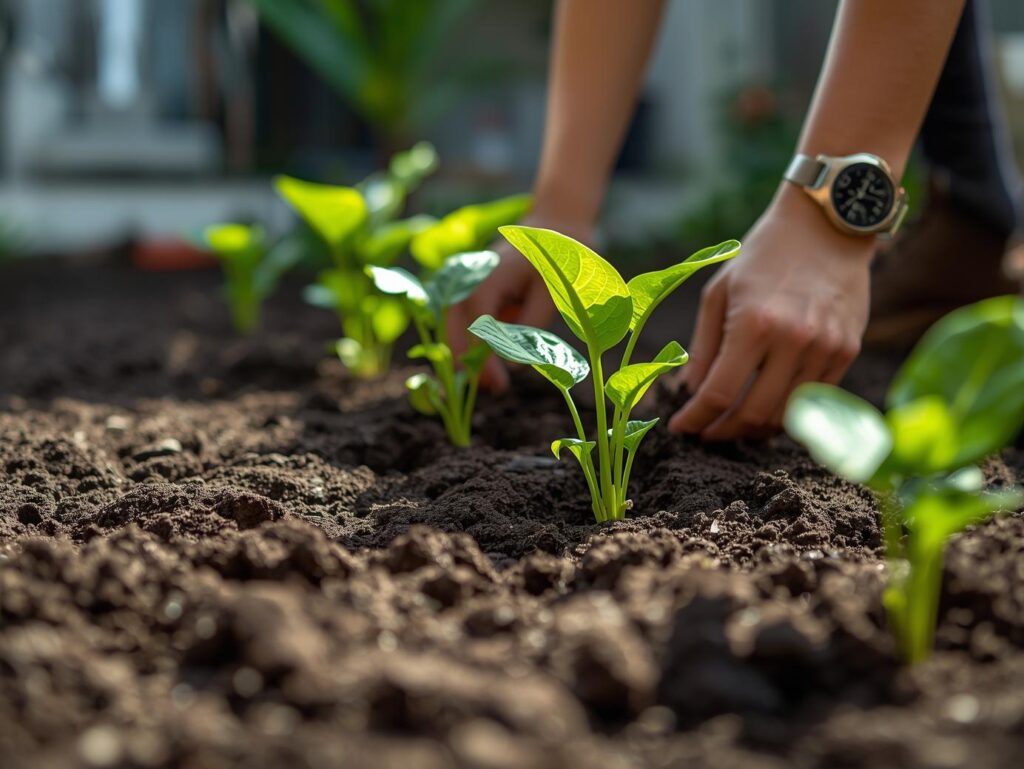
When growing in containers, use a large pot at least 18 inches deep to give the roots sufficient space. Fill it with rich, moist soil and water thoroughly after planting. Colocasia prefers humid conditions, so placing the containers in partially shaded areas helps prevent the soil from drying out too quickly. Proper planting techniques give the plant a strong start and help ensure healthy, well-developed roots at harvest time.
Watering
Watering is one of the most crucial aspects of growing Colocasia root, as it is a moisture-loving plant. The soil should be kept consistently wet, similar to conditions found near riverbanks or ponds. Water deeply two to three times a week, ensuring that moisture reaches the root zone. In hot U.S. climates, daily watering may be needed to maintain optimal soil conditions.
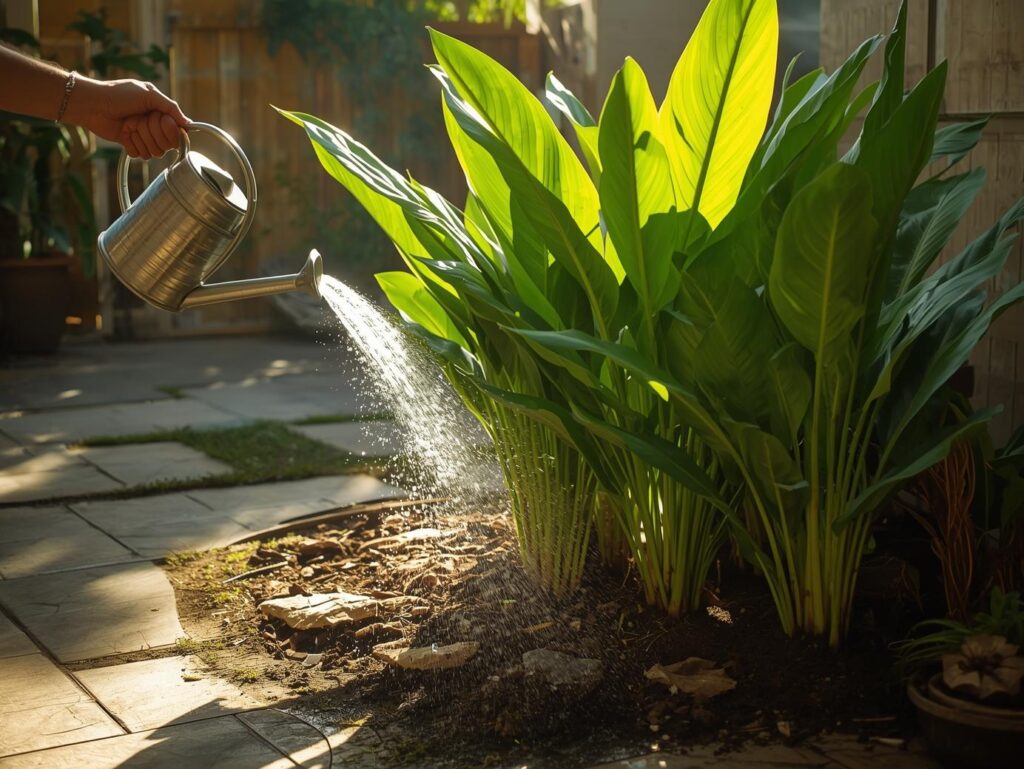
Mulching around the plants helps retain moisture and keeps the soil temperature stable. If growing Colocasia in containers, ensure they have drainage holes to prevent stagnant water from causing root rot. The goal is to maintain a damp environment without flooding the soil. Consistent watering encourages lush foliage and the development of large, healthy corms beneath the soil surface.
Fertilizing
Colocasia plants are heavy feeders and benefit greatly from nutrient-rich soil. Before planting, incorporate organic compost or a slow-release balanced fertilizer into the soil. Once the plants are established, feed them every three to four weeks with a nitrogen-rich fertilizer to support strong leaf growth, which is essential for photosynthesis and root development.
For organic gardeners, compost tea, fish emulsion, or liquid seaweed extract can provide the necessary nutrients naturally. Reducing nitrogen levels as the plant matures helps direct energy toward root formation rather than excessive leaf growth. Regular feeding maintains vibrant foliage and ensures that the Colocasia roots grow firm, flavorful, and large enough for harvest.
Pruning and Training
Colocasia doesn’t require extensive pruning, but periodic maintenance helps keep the plant healthy and attractive. Remove yellowing or damaged leaves regularly to prevent disease and allow new growth to flourish. This also improves air circulation, which is vital in preventing fungal infections in humid environments.
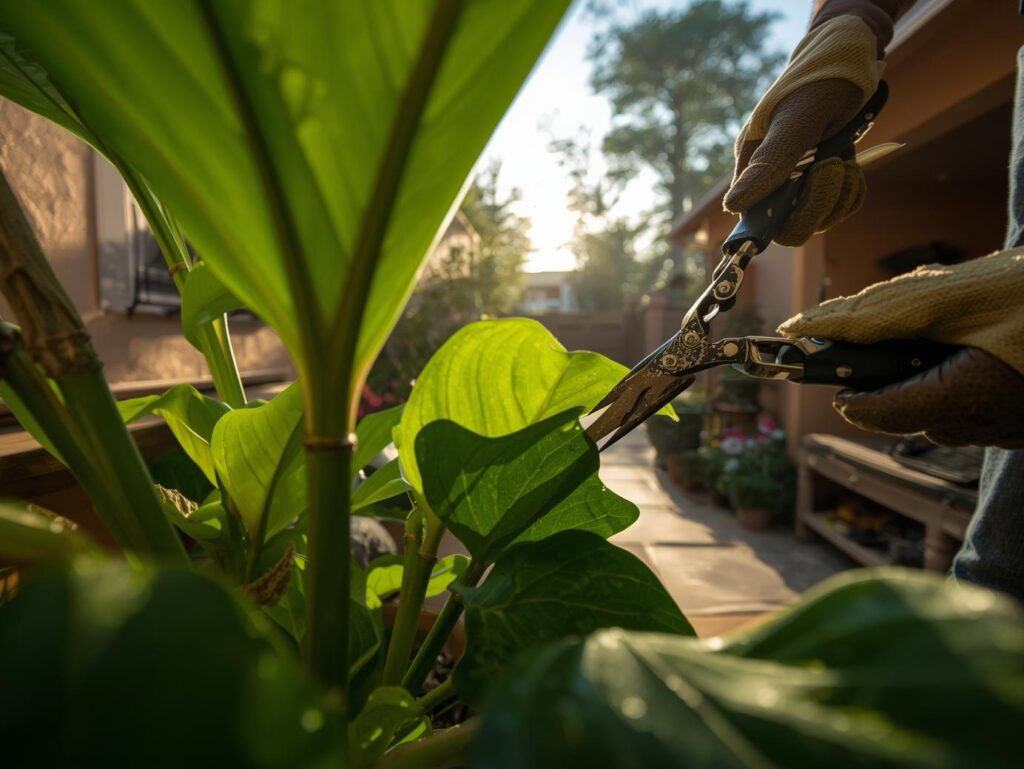
For courtyard gardeners, trimming the older leaves can help manage the plant’s size and appearance, especially when space is limited. Although Colocasia does not require training, positioning the plants for even sunlight exposure promotes uniform growth. By maintaining clean, healthy foliage, you encourage stronger root development and enhance the plant’s ornamental value in your garden.
Pest and Disease Control
Colocasia root can be affected by pests such as aphids, spider mites, and mealybugs. Regular inspection of the leaves and stems helps detect early signs of infestation. Spraying a mild solution of neem oil or insecticidal soap helps control these pests effectively without harming the plant or beneficial insects. Maintaining good air circulation and avoiding overcrowding also reduces pest problems.
Diseases like root rot and leaf blight can occur if the soil remains waterlogged or if watering is inconsistent. To prevent these issues, ensure that your soil drains well and avoid watering directly on the leaves. Remove any infected foliage promptly and keep the growing area clean. Healthy maintenance practices help your Colocasia plants resist pests and diseases, leading to a productive and thriving courtyard garden
Fruiting and Harvest
Colocasia root typically takes about six to eight months to mature, depending on the variety and growing conditions. You’ll know it’s time to harvest when the lower leaves start to yellow and die back naturally. Carefully loosen the soil around the base of the plant using a garden fork and lift the roots without damaging them. Clean the corms gently to remove excess soil.
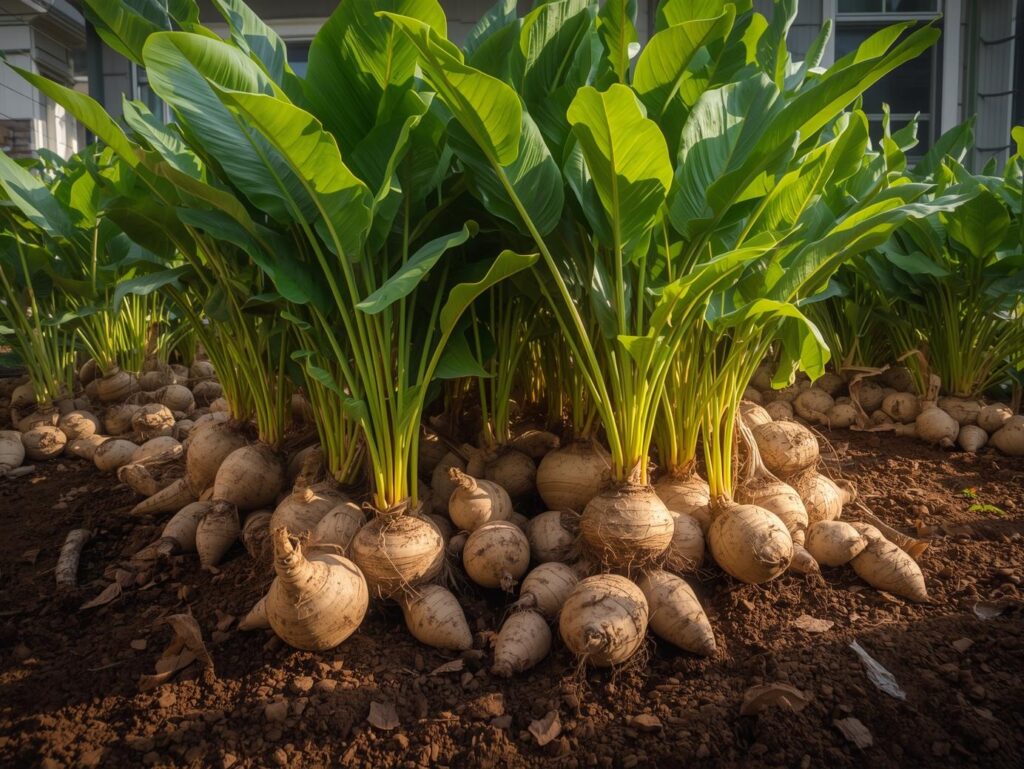
After harvesting, Colocasia roots can be stored in a cool, dry place for several weeks. In many U.S. regions, gardeners prefer to harvest before the first frost to prevent cold damage. For continuous production, you can replant smaller corms for the next growing cycle. A well-tended Colocasia garden rewards you with nutrient-rich, versatile roots that are perfect for cooking a variety of traditional and modern dishes.
